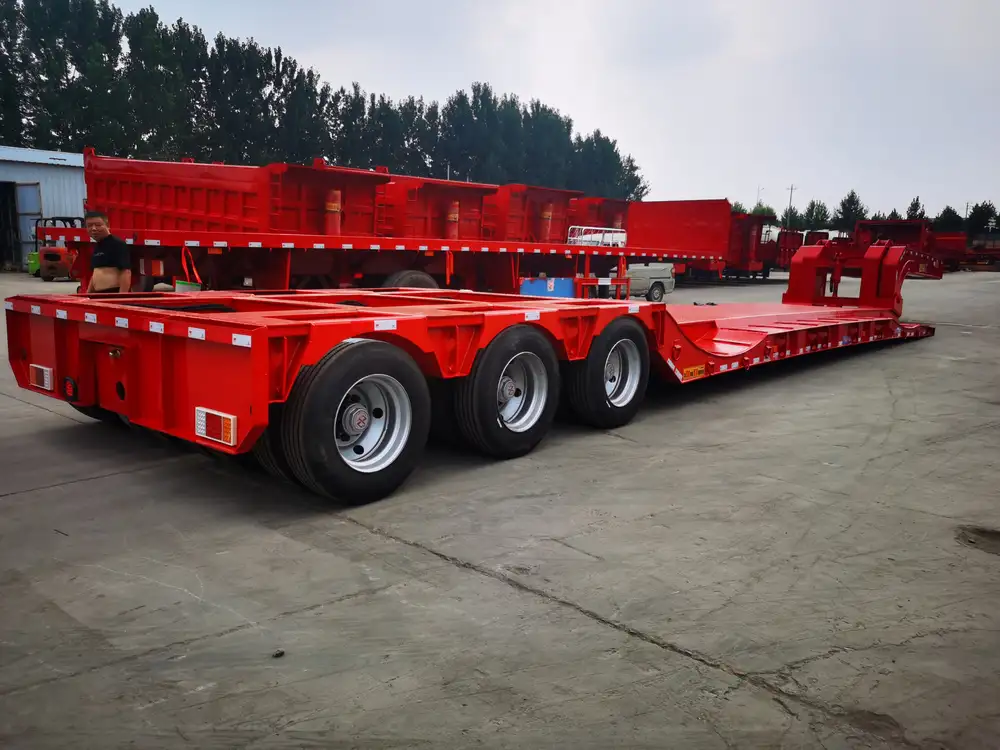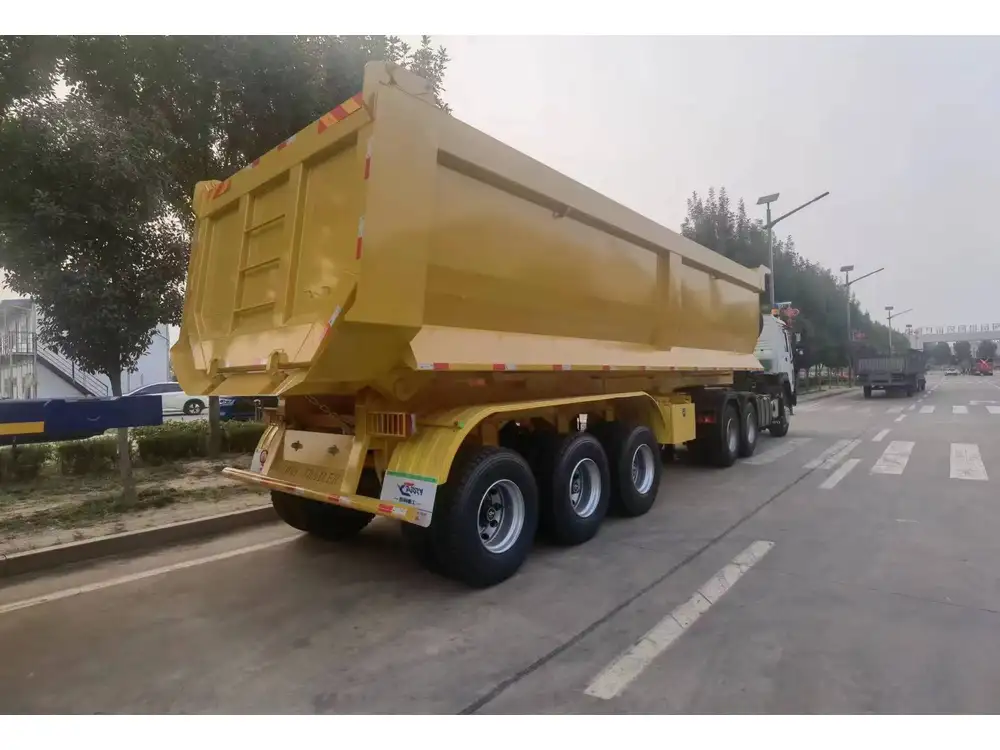Introduction to Semi-Trailers
In the transport logistics industry, semi-trailers play a pivotal role, forming the backbone of freight transportation. Capable of carrying large volumes of cargo efficiently, semi-trailers have evolved significantly over the years, optimizing their designs for various hauling capacities. This article delves into the multifaceted nature of semi-trailers, focusing on their types, specifications, benefits, and essential considerations for fleet operators seeking to maximize their transport efficiency.
Understanding the Structure of Semi-Trailers
Semi-trailers, typically characterized by their unique design where a part of the trailer’s weight rests upon the towing vehicle, are categorized based on several criteria. The complexity of their structure can be dissected into the following components:
| Component | Description |
|---|---|
| Chassis | The foundational frame that supports the trailer’s cargo. |
| Axles | The wheels that bear the weight of the trailer, usually ranging from one to three axles. |
| Suspension | The system that provides stability while absorbing shocks and vibrations during transportation. |
| Cargo Area | The designated space for transporting goods, which can be tailored based on the type of cargo. |
| Loading Mechanism | Options such as ramps, doors, and hydraulic lifts that facilitate loading and unloading. |

Types of Semi-Trailers
Flatbed Trailers
Flatbed trailers are highly versatile, offering an open platform for easy loading and unloading. Suitable for carrying oversized freight, their lack of sidewalls allows for flexible cargo configurations.Key Features:
- No sides or roof, allowing for easy access.
- Often used for construction materials, machinery, and large machinery.
Enclosed Trailers
Designed to provide protection against weather elements, enclosed trailers boast solid walls and a roof. These trailers are ideal for transporting sensitive goods that require extra care, such as electronics and perishables.Key Features:
- Secured environment to prevent damage and theft.
- Often temperature-controlled for sensitive cargo.
Reefer Trailers
Refrigerated semi-trailers, or reefers, are equipped with temperature control systems to maintain perishable goods, making them essential in food and pharmaceutical transport.Key Features:
- Capable of maintaining precise temperature ranges.
- Insulated walls to enhance cooling efficiency.
Tank Trailers
These trailers are specially designed to transport liquids, including hazardous materials, via a cylindrical tank. They require specific safety measures and certifications based on the contents they carry.Key Features:
- Pumping systems for loading and unloading liquids.
- Specialized materials to handle corrosive substances.
Step Deck Trailers
With a lower deck height, step deck trailers allow for the transportation of taller loads that might not fit under standard height restrictions. Their two-level structure can accommodate varying cargo sizes.Key Features:
- Ability to carry taller freight securely.
- Side extensions for added loading flexibility.
The Advantages of Using Semi-Trailers
Using semi-trailers in freight transport offers numerous benefits, making them preferable for fleet operators. Here are key advantages articulated in detail:
Increased Efficiency
The design of semi-trailers allows them to haul more cargo compared to traditional trailers, making them a more efficient option for long-distance transport. Their aerodynamic design often leads to reduced fuel consumption, promoting cost savings.

Flexible Configurations
The ability to customize semi-trailers based on specific cargo requirements enhances their utility. With various types and sizes available, businesses can select trailers that best suit their transport needs.
Lower Maintenance Costs
Semi-trailers generally have lower maintenance costs than other types of hauling vehicles, primarily due to their durable construction. They are easier to repair, and many components are replaceable, ensuring longevity and reducing downtime.
Enhanced Safety Features
Modern semi-trailers incorporate advanced safety features such as anti-lock braking systems (ABS), automatic tire inflation, and improved lighting systems. These innovations help protect cargo and reduce accident risks on the road.

Selecting the Right Semi-Trailer
Choosing the appropriate semi-trailer requires careful consideration of several factors. Here’s a structured approach to aid in decision-making:
Assess Cargo Type: Identify the nature of the goods to be transported. Perishable goods, heavy machinery, or hazardous materials each require specialized trailers.
Determine Route Specifications: Analyze the intended route to consider weight restrictions, road conditions, and loading/unloading facilities. Certain areas may have height restrictions that influence trailer choice.
Evaluate Budget Constraints: Establish a clear budget for purchasing or leasing a semi-trailer. Consider additional costs such as maintenance, insurance, and fuel efficiency in the overall expenditure.
Consider Regulatory Compliance: Ensure the selected trailer meets local and federal regulations, particularly for transporting hazardous materials or oversized loads.
Future-Proofing: Think about potential growth or changes in cargo type. A versatile trailer may be a better long-term investment than a specialized one.
Maintenance and Care for Semi-Trailers
To ensure a long lifespan and optimal performance of semi-trailers, regular maintenance is vital. Here’s a detailed maintenance checklist:
Daily Checks
- Inspect tires for proper inflation and tread wear.
- Check lights and indicators to ensure they are functioning.
- Examine the brake system for any wear or leaks.

Weekly Checks
- Inspect the coupling devices and their connections.
- Clean the cargo area to prevent contamination.
- Ensure that all safety features are operational.
Monthly Maintenance
- Perform a thorough inspection of the suspension system.
- Lubricate moving parts to prevent rust and wear.
- Conduct a detailed check of electrical systems.
Annual Maintenance
- Arrange for a professional inspection of the entire trailer.
- Examine the structure for any signs of wear or damage.
- Replace any worn-out parts to prevent roadside failures.

Conclusion: The Future of Semi-Trailers
The semi-trailer industry continues to evolve, driven by advancements in technology, regulations, and consumer demands. Innovations such as lightweight materials and smart trailer technology are enhancing efficiency and reducing environmental impact. As transportation needs grow increasingly complex, choosing the right semi-trailer becomes critical for fleet operators.
By focusing on specific cargo types, understanding regulations, and utilizing a structured approach to selection and maintenance, businesses can not only ensure timely deliveries but also optimize operations for future challenges. Whether you’re in logistics management or a small business owner, investing in the right semi-trailer will fortify your transport capabilities for years to come.
This comprehensive exploration of semi-trailers positions us to outperform competitors by providing detailed, actionable, and authoritative information that meets and anticipates the needs of our audience.



